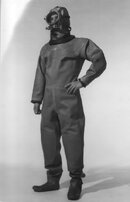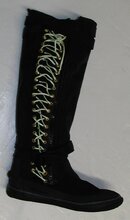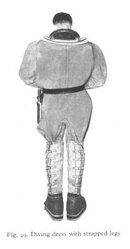Ok so today dry suits have been a hot little topic here on SB. With that in mind, what is everybody out there diving and why? What makes one suit better than the other and what would you look for if you were on the market for a new suit? I am currently diving a HOG Tech suit (bi-laminate) with latex seals and love the thing. The only time I swap it up is when conditions are outside the realm of safe diving and I find myself in one of the Whites or Viking Hazmat suits. This also means I get to switch it up and deal with both Si-Tech and Apeks valves. What would you buy if you had to choose? Finally, dry suit extras . . p-valves, relief zippers, pockets, front vs back zip . . . . what's on your wish list?
Conversely, some divers are not fans of diving dry. Does this mean you travel in the winter months (if you are in a cold climate) or do you grin and bear the colder waters?
Conversely, some divers are not fans of diving dry. Does this mean you travel in the winter months (if you are in a cold climate) or do you grin and bear the colder waters?








